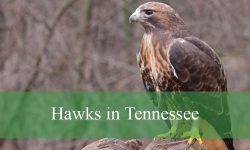Birdwatchers exploring Texas are in for a treat, as the state hosts a variety of colorful and intelligent jays. From the vibrant Green Jay along the southern border to the widespread Blue Jay, these birds add life and movement to forests, parks, and suburban areas.
Each species has unique markings, calls, and behaviors that make identification both exciting and rewarding. Understanding their habits and habitats can greatly enhance your birdwatching experience. Whether observing them in dense woodlands or at backyard feeders, Texas jays are fascinating to watch.
This guide covers 5 Types of Jays in Texas (With Pictures and Identification), providing detailed descriptions, where to spot them, and interesting facts about their behavior, diet, and nesting.
Different Types of Jays Found in Texas
Blue Jay (Cyanocitta cristata)
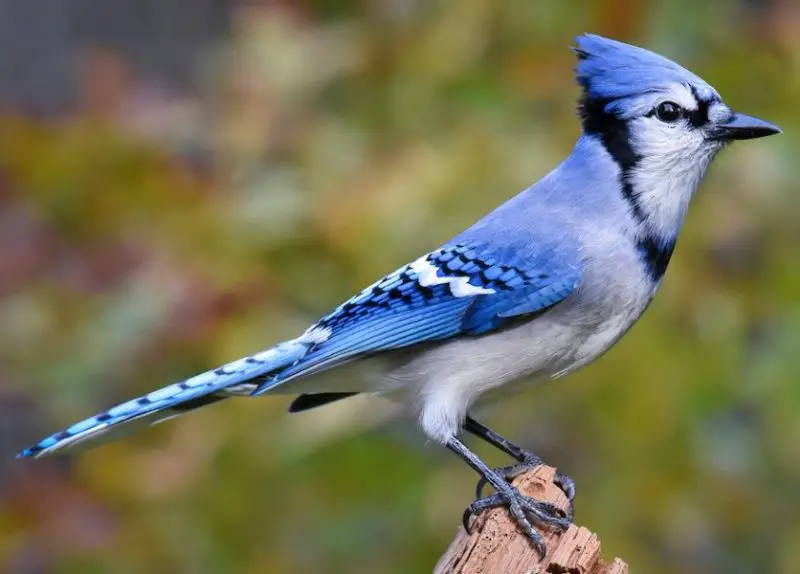
Blue Jays are striking birds with vivid blue plumage on their backs, wings, and tails, contrasted by white underparts and a black “necklace” marking across the throat. Their crested heads are distinctive, and their wings show bold white and black barring. In flight, the contrasting colors are especially noticeable, making them easy to identify.
Adults typically measure about 9–12 inches (23–30 cm) in length with a wingspan of 13–17 inches (34–43 cm). They weigh roughly 2.5–3.5 ounces (70–100 g). Their strong, slightly curved beaks and sturdy legs are well adapted for foraging and cracking nuts. Blue Jays’ loud “jay jay” calls are unmistakable, but they can also mimic hawks to deter predators.
Blue Jays are omnivorous, feeding on acorns, nuts, seeds, fruits, insects, and occasionally eggs or nestlings of smaller birds. They are known for caching food, hiding acorns in the ground for later consumption. These birds are highly intelligent and social, often forming family groups or small flocks outside the breeding season.
In Texas, Blue Jays are widely distributed across forests, suburban areas, and city parks. They build sturdy cup-shaped nests in tall trees, with females laying 3–6 eggs per clutch. A fun fact: Blue Jays are excellent at warning other birds of predators and may even mob larger animals to protect their territory.
Green Jay (Cyanocorax yncas)
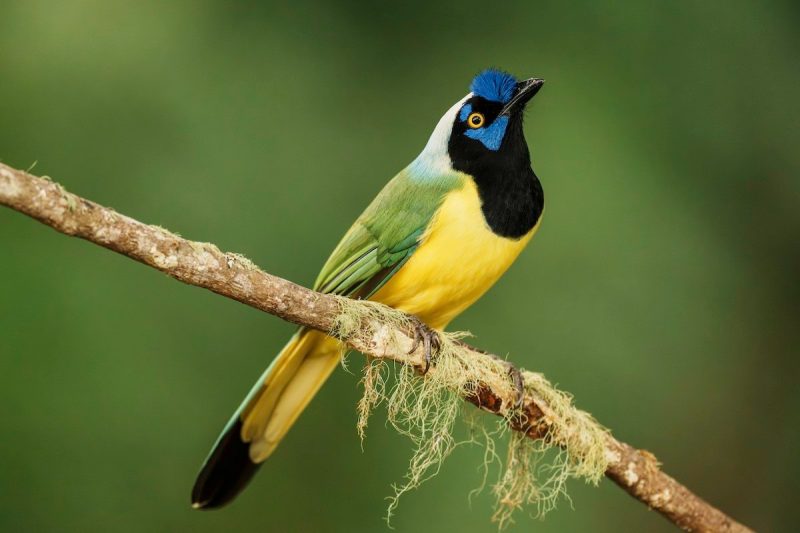
Green Jays are among the most colorful birds in Texas, featuring a bright green back, yellow belly, and striking blue and black facial markings with a bold black bib. Their long tails often display subtle blue hues, and their vivid coloration makes them a favorite for birdwatchers in southern Texas.
They are medium-sized, about 10–12 inches (25–30 cm) in length, with a wingspan of roughly 15–18 inches (38–46 cm). Green Jays weigh around 3–4 ounces (85–115 g). Their strong, slightly hooked bills are perfect for cracking seeds and handling insects, while their legs are sturdy for hopping along the forest floor.
Green Jays are omnivorous, feeding on insects, small vertebrates, fruits, seeds, and eggs. They are highly social and usually seen in small family groups or large flocks, moving noisily through dense thorny brush and forests. Breeding pairs work together to raise chicks, with cooperative breeding sometimes observed, where older offspring help care for new nestlings.
In Texas, Green Jays are primarily found in the Rio Grande Valley and other southern border regions, favoring subtropical woodlands, thorn forests, and brushy areas. They build cup-shaped nests in dense vegetation. Fun fact: Green Jays can recognize individual humans, showing impressive memory skills similar to corvid relatives like crows and ravens.
Woodhouse’s Scrub-Jay (Aphelocoma woodhouseii)

Woodhouse’s Scrub-Jays are more subtly colored than other jays, with pale blue on the head, wings, and tail, gray-brown back, and whitish underparts. They have a distinctive blue eye-stripe that contrasts with the gray face, making them identifiable in Texas scrublands and open woodlands.
Adults are slightly smaller than Green Jays, measuring 10–11 inches (25–28 cm) in length with a wingspan of 14–16 inches (36–41 cm). They weigh approximately 2.5–3 ounces (70–85 g). Their strong, straight bills are designed for foraging in the soil for insects, acorns, and other seeds.
Woodhouse’s Scrub-Jays are curious and intelligent, often observed caching acorns and nuts for winter. Their diet includes insects, berries, small reptiles, and occasionally eggs. These birds are known to be bold around humans, frequently visiting feeders or foraging near homes. They are monogamous and raise 2–6 chicks per season, with both parents caring for the young.
In Texas, they inhabit the western and northern scrublands, oak-juniper woodlands, and semi-arid areas. Nests are built in low trees or shrubs, often hidden from predators. Fun fact: Woodhouse’s Scrub-Jays have an amazing spatial memory, remembering thousands of cached food locations months later, which helps them survive harsh winters.
Mexican Jay (Aphelocoma wollweberi)
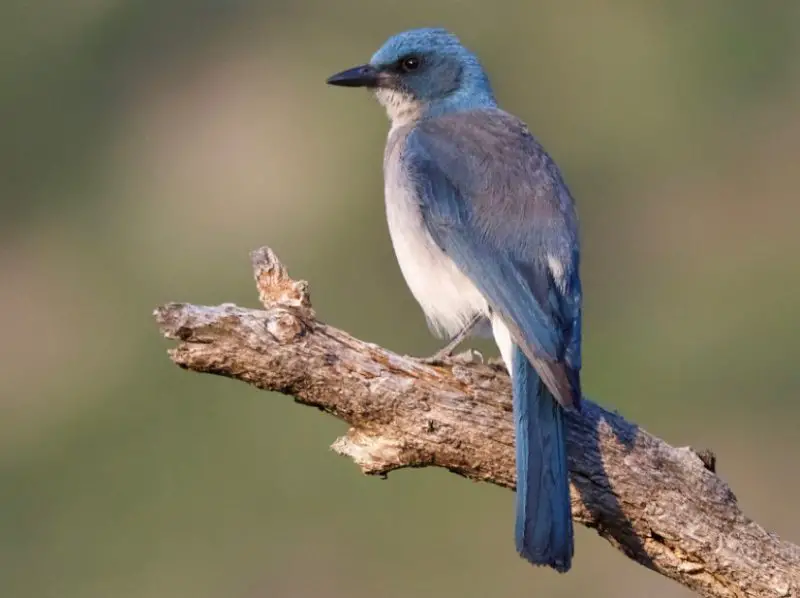
Mexican Jays are large, social birds with striking blue plumage on their head, wings, and tail, contrasted by grayish-brown backs and lighter underparts. Their long tails and bold white eye-stripes make them easily identifiable in southern Texas, especially in oak and pine woodlands.
Adults measure around 11–12 inches (28–30 cm) in length with a wingspan of 15–17 inches (38–43 cm) and weigh about 3–4 ounces (85–115 g). Their strong bills are slightly curved, ideal for foraging on acorns, seeds, and insects, while their legs are sturdy for hopping along branches and the forest floor.
Mexican Jays are highly social and often found in noisy flocks, sometimes exceeding 30 individuals. They forage together, feeding on acorns, berries, insects, and occasionally small vertebrates. Cooperative breeding is common, with older offspring helping parents feed the young. They are vocal, using a wide range of calls to communicate with flock members.
In Texas, Mexican Jays are primarily seen in the Davis Mountains, Big Bend, and other southern mountainous regions. They build bulky, cup-shaped nests in dense trees or thorny shrubs. Fun fact: Mexican Jays are one of the few bird species known for cooperative breeding, where “helpers” increase the survival rate of new chicks.
Steller’s Jay (Cyanocitta stelleri)
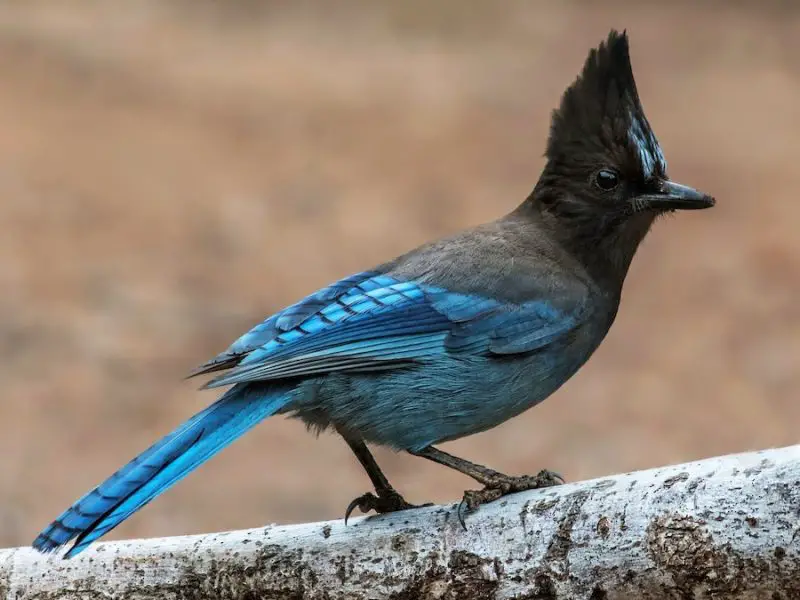
Steller’s Jays are visually striking birds with deep blue bodies, black crested heads, and bright blue wing and tail feathers. Their black crest is raised when excited or alarmed, making them highly expressive. These jays are easily distinguished from other blue-colored jays by their darker head and uniform body coloration.
Adults measure about 11–13 inches (28–33 cm) in length with a wingspan of 16–18 inches (41–46 cm), weighing roughly 3.5–4.5 ounces (100–130 g). Their strong, straight bills are adapted for a diet of seeds, nuts, insects, and small animals. They are agile fliers and often hop energetically along branches while foraging.
Steller’s Jays are bold, intelligent, and highly vocal, producing a variety of harsh calls and whistles. They are omnivorous, feeding on nuts, seeds, fruits, insects, and even eggs. They cache food for later use and are known to mimic sounds from their environment, including other bird calls and even human noises.
In Texas, Steller’s Jays are mainly found in the western mountainous regions, including the Davis and Guadalupe Mountains. They prefer pine-oak forests and build cup-shaped nests high in trees. Fun fact: Steller’s Jays are notorious “food thieves,” often stealing from bird feeders or taking acorns from squirrels and other birds.
Best Time and Places to Spot Jays in Texas
Blue Jays are year-round residents across much of eastern and central Texas. They are easiest to spot during early morning or late afternoon when they are actively foraging for acorns, nuts, and seeds. Look for them in deciduous forests, suburban parks, and backyard feeders. Blue Jays are particularly vocal during the breeding season (March to July), making them easier to locate by their calls.
Green Jays are primarily found in southern Texas, especially in the Rio Grande Valley, South Padre Island, and brushy subtropical forests near the U.S.–Mexico border. They can be observed year-round, but their activity is highest in the cooler mornings. Dense thorn forests, riparian corridors, and wooded edges of ranches provide excellent opportunities to spot these colorful birds. Listening for their harsh, rolling calls can help locate them among thick foliage.
Woodhouse’s Scrub-Jays are most common in western and northern Texas scrublands, oak-juniper woodlands, and semi-arid regions. Early mornings during spring and fall offer the best chance to see them actively foraging for insects, berries, and cached nuts. They are often seen along dirt roads, edges of woodlands, and near human settlements where feeders or open areas are available. Their bold behavior and curiosity make them approachable for birdwatchers.
Mexican Jays inhabit southern and mountainous regions of Texas, including Big Bend, the Davis Mountains, and surrounding pine-oak woodlands. The best times to see them are during spring and summer mornings when they are most active in noisy flocks. Trails, forest edges, and high-elevation oak groves are ideal spotting locations. Cooperative breeding behavior can often be observed in family groups as adults and older offspring work together to feed chicks.
Steller’s Jays are found in western Texas, particularly in the Davis and Guadalupe Mountains, preferring pine-oak forests and mixed coniferous woodlands. They are easiest to spot in the early morning or late afternoon while foraging or moving through tree canopies. Their distinctive calls often give away their location before they are seen. Birdwatchers may also spot them near mountain lodges, picnic areas, and along forested hiking trails, as they are not shy around humans.
FAQs About Jays in Texas
What species of jays can be found in Texas?
Texas is home to five main jay species: Blue Jay, Green Jay, Woodhouse’s Scrub-Jay, Mexican Jay, and Steller’s Jay. Each species has unique coloration, behavior, and habitat preferences across different regions of the state.
When is the best time to see jays in Texas?
Jays are generally active year-round, but early morning and late afternoon are the best times to observe them. Spring and summer are particularly good for spotting breeding behaviors, while fall is ideal for seeing food-caching activity in species like Blue Jays and Woodhouse’s Scrub-Jays.
Where can I spot Green Jays in Texas?
Green Jays are mostly found in southern Texas, especially in the Rio Grande Valley, South Padre Island, and subtropical thorn forests. Look for them in dense brush, riparian corridors, and edges of wooded ranchlands.
Are Blue Jays migratory in Texas?
Blue Jays are partially migratory. Some populations in northern and eastern Texas may move short distances in the winter, while many remain year-round in the state’s forests, suburban areas, and parks.
What do jays eat in Texas?
Jays are omnivorous. Their diet includes acorns, seeds, nuts, berries, insects, small vertebrates, and occasionally eggs or nestlings of other birds. Many species, like Blue Jays and Woodhouse’s Scrub-Jays, cache food for later use.
Do jays form social groups in Texas?
Yes, several species are highly social. Green Jays, Mexican Jays, and Steller’s Jays often form noisy flocks, while Blue Jays and Woodhouse’s Scrub-Jays may gather in family groups or small flocks outside the breeding season. Cooperative breeding is observed in Mexican and Green Jays.
How can I identify different jays in Texas?
Identification is based on plumage coloration, markings, size, and behavior. Blue Jays have vivid blue and white feathers with a black neck band. Green Jays are bright green with yellow underparts and blue facial markings. Woodhouse’s Scrub-Jays are pale blue and gray, Mexican Jays are blue and gray with long tails, and Steller’s Jays have dark heads with deep blue bodies and crests.
Are jays beneficial for the environment in Texas?
Yes, jays play important ecological roles. They help disperse seeds, particularly acorns, and control insect populations. Their warning calls also alert other wildlife to potential predators, benefiting multiple species in their habitat.



